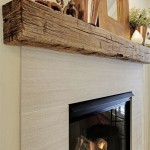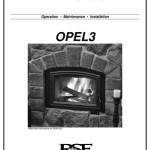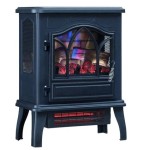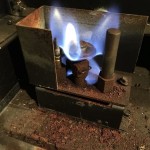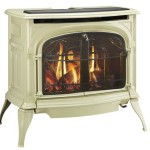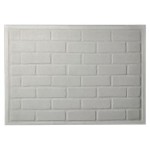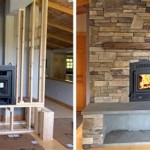Brick Fireplace Reclaimed Wood Mantel: A Harmonious Blend of Styles
A brick fireplace serves as a traditional focal point in many homes, radiating warmth and a sense of timelessness. Complementing this rustic foundation with a reclaimed wood mantel adds another layer of character, creating a captivating juxtaposition of textures and styles. The combination offers a unique aesthetic that can enhance a variety of interior designs, from farmhouse chic to modern industrial.
Reclaimed wood, sourced from old barns, factories, or even sunken logs, brings with it a rich history and distinct visual appeal. Each piece bears the marks of time, including nail holes, saw marks, and variations in color that tell a story. Integrating this material into a fireplace mantel introduces an element of authenticity and eco-consciousness to the living space. The pairing with brick, a material renowned for its durability and classic appeal, results in a fireplace that is both beautiful and enduring.
Understanding the Appeal of the Combination
The popularity of brick fireplaces with reclaimed wood mantels stems from several factors. First, the combination creates a visually interesting focal point. The rough texture and warm tones of the brick are beautifully contrasted by the unique character and inherent imperfections of the reclaimed wood. This interplay of textures and colors adds depth and visual interest to the room, drawing the eye and creating a welcoming atmosphere.
Second, the pairing represents a balance between traditional and contemporary styles. Brick fireplaces have been a staple in homes for centuries, evoking a sense of history and heritage. Reclaimed wood, while possessing its own historical context, also aligns with contemporary design trends that emphasize sustainability and the incorporation of natural materials. This blending of old and new appeals to a broad range of homeowners seeking a timeless yet modern aesthetic.
Third, the addition of a reclaimed wood mantel provides practical benefits. It offers a surface for displaying decorative items such as photographs, artwork, candles, and seasonal décor. The mantel can also serve as a shelf for storing fireplace accessories, such as kindling or matches, keeping them conveniently accessible yet neatly organized. Furthermore, the mantel provides a visual break between the fireplace opening and the wall above, enhancing the overall proportions of the fireplace and creating a more balanced design.
Selecting the Right Reclaimed Wood for Your Mantel
Choosing the right reclaimed wood for a fireplace mantel requires careful consideration of several factors. The type of wood, its dimensions, its condition, and its overall aesthetic should all be taken into account to ensure a cohesive and visually appealing result.
Different types of reclaimed wood offer distinct characteristics. Oak, known for its strength and durability, provides a classic and timeless look. Pine, with its warm tones and distinctive grain patterns, is often favored for its rustic charm. Chestnut, a prized wood that is becoming increasingly rare, offers a rich color and exceptional character. The choice of wood should complement the existing brick and the overall design scheme of the room.
The dimensions of the mantel are also crucial. The length should be proportionate to the width of the fireplace, extending slightly beyond the brick on either side to create a balanced look. The depth of the mantel should be sufficient to accommodate decorative items without appearing too bulky or overwhelming. The thickness of the wood contributes to the overall visual weight of the mantel and should be chosen accordingly. A thicker mantel conveys a sense of solidity and grandeur, while a thinner mantel appears more delicate and refined.
The condition of the reclaimed wood is another important consideration. While imperfections such as nail holes and saw marks contribute to its unique character, the wood should be structurally sound and free from significant damage or decay. It may be necessary to clean, sand, and seal the wood to prepare it for use as a mantel. This process can remove dirt, debris, and loose splinters while preserving the wood's natural character and protecting it from moisture and insects.
Finally, the overall aesthetic of the reclaimed wood should align with the desired look and feel of the fireplace and the room. Consider the color, grain pattern, and texture of the wood. A darker wood will create a more dramatic and sophisticated look, while a lighter wood will contribute to a brighter and more airy feel. A heavily textured wood will add rustic charm, while a smoother wood will create a more refined and contemporary appearance. It is essential to select a piece of reclaimed wood that complements the existing brick and enhances the overall design of the space.
Installation Considerations for a Reclaimed Wood Mantel
Proper installation of a reclaimed wood mantel is essential to ensure its safety, stability, and longevity. Several different methods can be used to attach the mantel to the brick fireplace, depending on the size and weight of the mantel, the type of brick, and the desired aesthetic. It is highly recommended to consult with a qualified contractor or experienced DIYer to determine the best installation method for a specific situation.
One common method involves using heavy-duty steel brackets that are attached to the brick using masonry screws or anchors. These brackets provide a strong and secure support for the mantel, distributing its weight evenly across the brick surface. The brackets can be concealed within the mantel or left exposed for a more industrial look. It is crucial to use high-quality masonry fasteners that are specifically designed for use with brick to ensure a secure and lasting hold.
Another method involves using a wood ledger board that is attached to the brick. The ledger board provides a flat and stable surface for the mantel to rest on. The mantel is then attached to the ledger board using screws or nails. This method is best suited for smaller, lighter mantels that do not require a significant amount of support. It is important to ensure that the ledger board is securely attached to the brick using appropriate fasteners.
Regardless of the installation method used, it is essential to ensure that the mantel is level and plumb. This will prevent it from appearing crooked or unstable and will ensure that it functions properly. It is also important to leave a small gap between the top of the mantel and the brick above to allow for expansion and contraction of the wood due to changes in temperature and humidity. This will prevent the mantel from cracking or warping over time.
Before installing the mantel, it is advisable to apply a sealant or finish to protect the wood from moisture and stains. This will help to preserve its beauty and prolong its lifespan. Choose a sealant or finish that is appropriate for the type of wood and the desired aesthetic. Consider factors such as durability, water resistance, and UV protection.
Maintaining the Beauty of Your Reclaimed Wood Mantel
Once the reclaimed wood mantel is installed, proper maintenance is essential to preserve its beauty and extend its lifespan. Regular cleaning and occasional refinishing will help to keep the mantel looking its best for years to come.
Dust the mantel regularly with a soft cloth or brush to remove dirt and debris. Avoid using harsh chemicals or abrasive cleaners, as these can damage the wood's finish. For stubborn stains, use a mild soap and water solution. Apply the solution to a soft cloth and gently wipe the stained area. Rinse with a clean, damp cloth and dry thoroughly.
Occasional refinishing may be necessary to restore the mantel's luster and protect it from wear and tear. The frequency of refinishing will depend on the type of wood, the finish used, and the amount of use the mantel receives. Signs that it is time to refinish the mantel include fading, scratching, and peeling of the finish.
Before refinishing the mantel, it is essential to prepare the surface properly. This may involve sanding the wood to remove the old finish and create a smooth surface for the new finish to adhere to. Clean the sanded surface thoroughly to remove dust and debris. Apply the new finish according to the manufacturer's instructions. Allow the finish to dry completely before using the mantel.
In addition to regular cleaning and refinishing, it is important to protect the reclaimed wood mantel from excessive moisture and heat. Avoid placing hot items directly on the mantel, as this can damage the finish. Keep the mantel away from direct sunlight, as this can cause the wood to fade and dry out. If the mantel is located near a fireplace, be sure to maintain a safe distance between the flame and the wood to prevent scorching or fire hazards.
By following these simple maintenance tips, homeowners can ensure that their brick fireplace with reclaimed wood mantel remains a beautiful and cherished focal point for many years to come.

Handcrafted Rustic Mantel From Century Old Reclaimed Wood Fully Customizable Farmhouse Fireplace Brick Makeover Home

Brick Fireplace Update Using Cement And Aged Wood Mantel

Diy Rustic Fireplace Mantel The Cure For A Boring

White Brick Fireplace Reclaimed Wood Mantle Surrounds

Barnwood Fireplace Mantel The Collection

Hand Hewn Beam Fireplace Mantel 8x8 8 Foot Wood Elmwood Reclaimed Timber

Distressed Alder Mantel Notable Wood

Resawn Reclaimed Wood Faux Beam Mantels

Red Brick Fireplace With Reclaimed Wood Mantel Google Search Antique Mantels

Other Craftsman Mantels Photos Whole Log Reclaimed Nc
Related Posts

